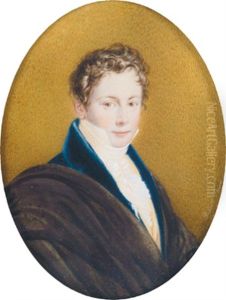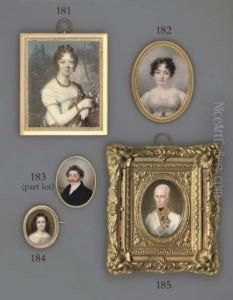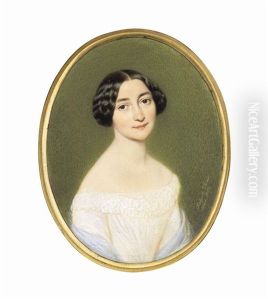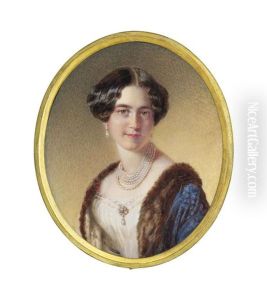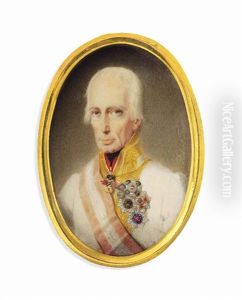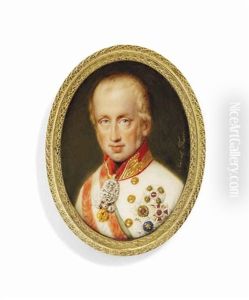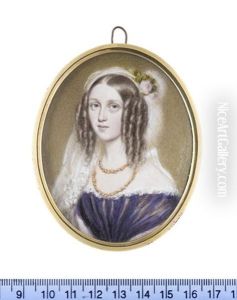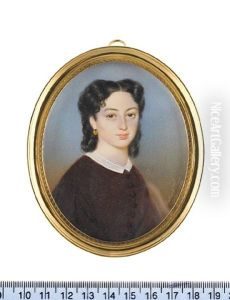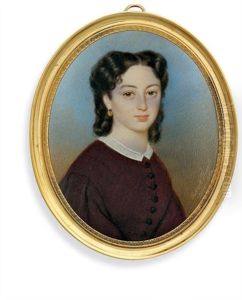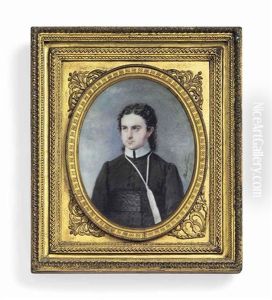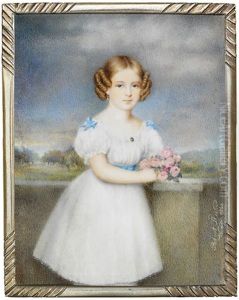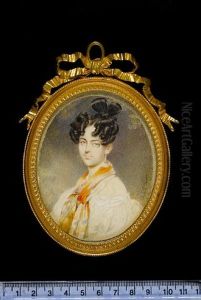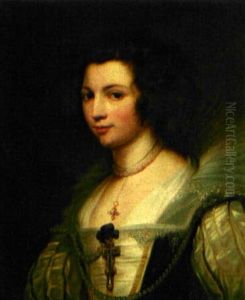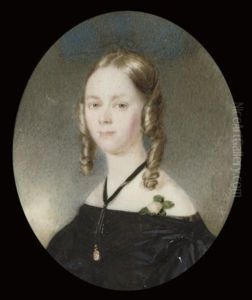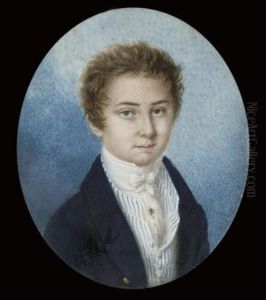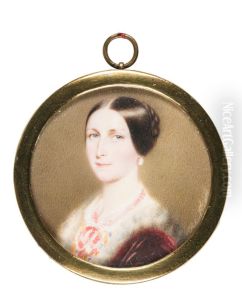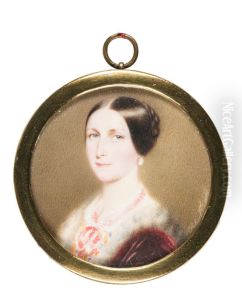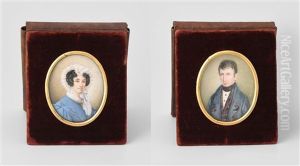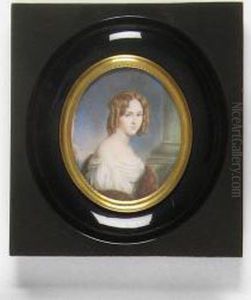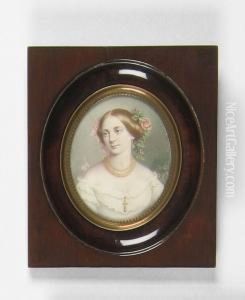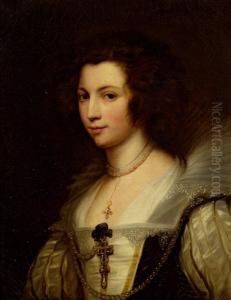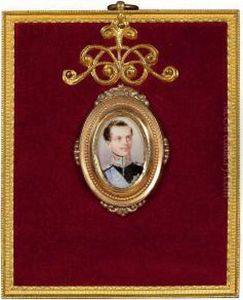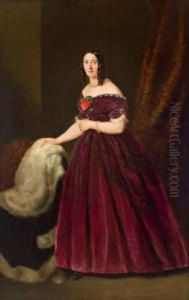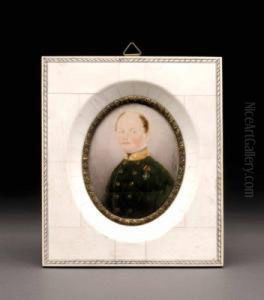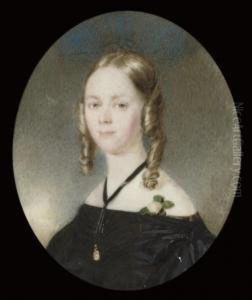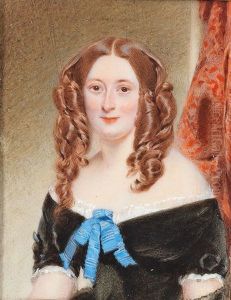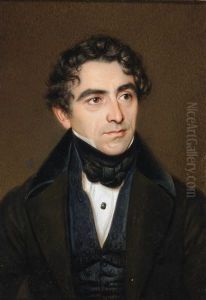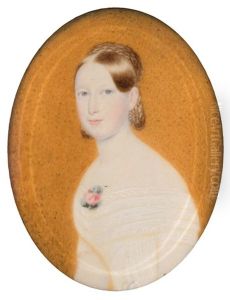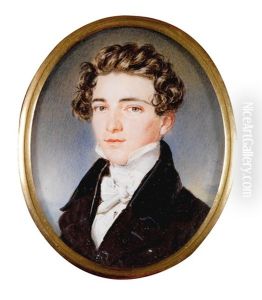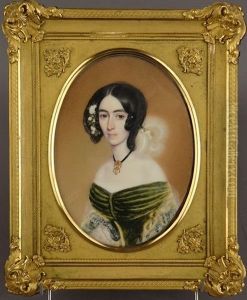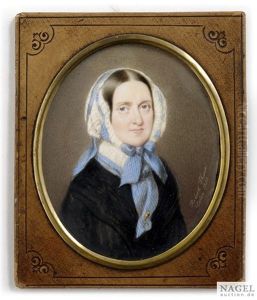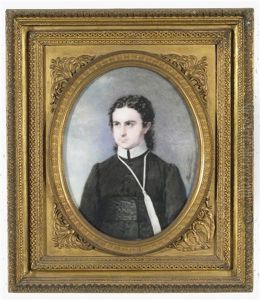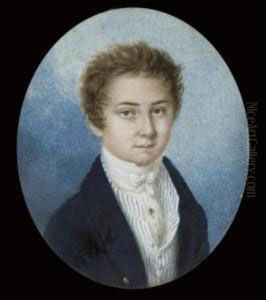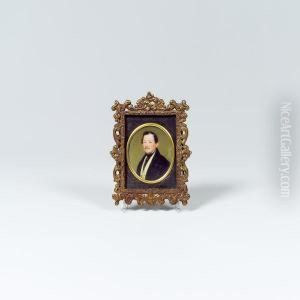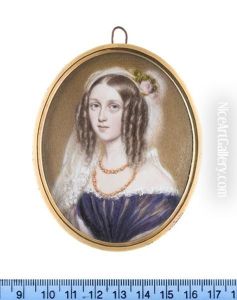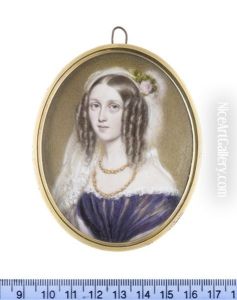Robert Theer Paintings
Robert Theer, born on April 10, 1808, in Vienna, was an Austrian miniature painter who gained renown for his delicate and detailed portraits. His work is characterized by the precision and clarity he brought to the miniature painting tradition, a form that was especially popular in the 19th century among the European nobility and bourgeoisie for personal keepsakes and as tokens of affection.
Theer received his artistic training at the Academy of Fine Arts in Vienna, where he was influenced by the Biedermeier style, prevalent in the German-speaking world between 1815 and 1848, characterized by a focus on the domestic and a sense of bourgeois realism. His skill at capturing the likeness and personality of his subjects soon brought him attention and commissions.
Throughout his career, Theer worked for the Austrian imperial family and the high aristocracy, creating portraits that were often set in elaborate frames and worn as jewelry. His miniatures frequently depicted his subjects in contemporary fashion, with careful attention to the textures and details of their clothing and jewelry, as well as the nuanced expressions on their faces.
Despite the rise of photography during his lifetime, which supplanted miniature painting as the preferred medium for portraiture, Theer continued to receive commissions from patrons who valued the artistry and individuality of hand-painted portraits. Although not as well-known today as some of his contemporaries, Theer's work is represented in museums and private collections, where it is appreciated for its craftsmanship and historical value.
Robert Theer's life was largely spent in the pursuit of his art, and he died on June 14, 1863, in his hometown of Vienna. His legacy is modest but enduring within the history of 19th-century European art, particularly in the context of the miniature painting tradition.
